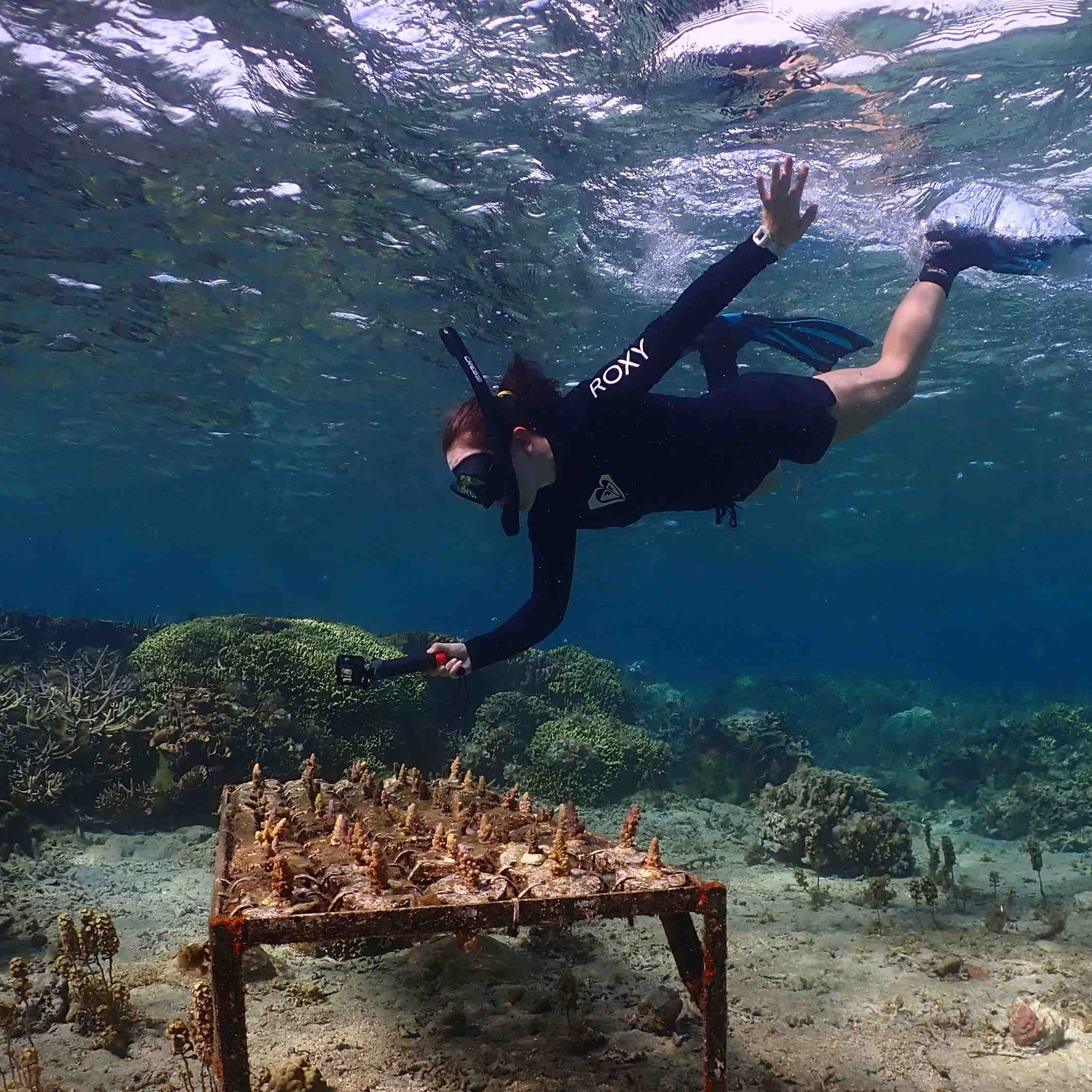About This Project
Corals come in a rainbow of colors, due to fluorescent proteins (FPs) these coral hosts produce. The high diversity and repeated evolution of these FPs indicates an important role in host biology, but we don’t know what that role is. By capturing fluorescent profiles using a custom low-cost fluorometer followed by experimental bleaching assays, we seek to understand the role of FPs in coral symbiosis maintenance and bleaching tolerance on Fijian coral reefs.
Ask the Scientists
Join The DiscussionWhat is the context of this research?
FPs absorb light at one wavelength, and reemit it at lower, less energetic wavelengths—characteristics that can be used to identify different types of FPs. Using these fluorescent profiles, we can identify the different FPs produced by various color morphs of coral species and relate those to experimental bleaching tolerances and symbiont communities of those coral hosts. Characterizing FP profiles for different species in combination with performance in experimental bleaching stress tests can identify the roles of different types of FPs – allowing for the identification of more stress-tolerant coral colonies by simple visual qualification of color morphs.
What is the significance of this project?
This project will characterize the fluorescent protein cohort for different species of the genera Acropora, Pocillopora, and Porites on Fijian coral reefs. These proteins are related to many biological functions in coral hosts, including those related to maintaining symbioses with their algal partners.
The fluorometer developed as part of this project will be low-cost, non-invasive, and open source-- creating a new tool for restoration practitioners to use to increase the efficacy of reef restoration efforts. Once the FPs of different morphs of a species have been characterized and related to host bleaching tolerance, restoration practitioners will only need their eyes to identify those color morphs on the reefs to know what to include in selective propagation efforts.
What are the goals of the project?
This project will develop a tool to capture phenotypic profiles of different color morphs of coral species using multiple wavelengths of light integrated into a low-cost fluorometer. This information will be compared with experimental bleaching results to understand how different types of fluorescent proteins are related to host bleaching tolerance and the maintenance of the coral-algal symbiosis under stress. We will target species that are dominant reef-builders and vital to reef communities in Fiji. This data will all be combined to profile specific color morphs that are most hardy in the face of climate change and identify types of FPs that are related to increased bleaching tolerance for different coral species.
Budget
This project revolves around developing a novel fluorometer to target different colors of fluorescent proteins. To ensure accurate excitation of these pigments, a monochromator and custom LED arrays will allow us to precisely select excitation wavelengths. Since the goal of the project is to determine how these fluorescent pigments affect the algal-coral symbiotic relationship, genotyping of the symbionts is necessary to identify hidden diversity of the zooxanthellae community.
This project will support a larger research project studying the photophysiology of coral reefs in Fiji using similar principles of fluorometry. This Experiment.com grant is integral to my developing this fluorescent protein instrument to answer questions about the evolution of coral-algal symbiosis as part of my PhD.
Endorsed by
 Project Timeline
Project Timeline
This project will entail a trip to Fiji in June 2025, where I will sample multiple reef sites and coral species on Fijian reefs. As the first field test of the instrument, data from this trip will be used to refine the wavelengths used for the fluorometry. Experimental bleaching assays will also be carried out during this trip, so I will be able to form preliminary conclusions about fluorescent proteins related to increased host heat tolerance.
Dec 01, 2024
Build GFP fluorometer
Jan 14, 2025
Project Launched
Jun 15, 2025
Travel to Viti Levu, Fiji
Aug 01, 2025
Identify coral species and color morphs with greater heat tolerance
Meet the Team
Affiliates
Sophie Wong
I've grown up around coral my entire life. My father's stories of his childhood on coral reefs in Mauritius sparked my interest in marine biology, but the coevolution between coral and their algal symbionts has captured my interest as a researcher since. During my undergraduate career at the University of Virginia, I completed two REUs at Mote Marine Laboratory and the Dauphin Island Sea Lab where I studied different aspects of coral heat tolerance and symbiosis.
Now, as part of my PhD, I am working with restoration practitioners in Fiji and Florida to develop low-cost, novel tools to increase the efficacy of outplanting initiatives. Utilizing principles of fluorometry, the Hoadley lab focuses on developing non-invasive tools to understand photobiology of phytoplankton and coral. I have been a part of developing these fluorometers since I began my graduate school career with Dr. Hoadley at the University of Alabama, and now I am working on developing my own instrument to answer questions about the host influence over symbiont photobiology.
My goal is to eventually become a professor and lead my own lab to continue developing novel technology to investigate the coral-algal symbiosis
Project Backers
- 2Backers
- 72%Funded
- $2,510Total Donations
- $1,255.00Average Donation

